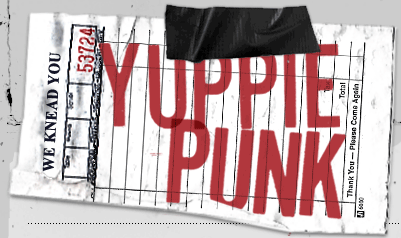Our So-Called Book Review
 There are only a few really great books about punk rock’s history. “” by Legs McNeil and Gillian McCain is one of them, as is Michael Azerrad’s “.” The former title is an essential history of punk’s origins, while the latter is a “Behind the Music”-style document of the 1980’s most important independent bands. As punk turns thirty, “,” by Interview music editor Matt Diehl, hopes to complete the trilogy, outlining the modern neo-punk landscape from Green Day’s rising popularity in the early ’90s to the modern day mainstreaming of punk porn’s Suicide Girls.
There are only a few really great books about punk rock’s history. “” by Legs McNeil and Gillian McCain is one of them, as is Michael Azerrad’s “.” The former title is an essential history of punk’s origins, while the latter is a “Behind the Music”-style document of the 1980’s most important independent bands. As punk turns thirty, “,” by Interview music editor Matt Diehl, hopes to complete the trilogy, outlining the modern neo-punk landscape from Green Day’s rising popularity in the early ’90s to the modern day mainstreaming of punk porn’s Suicide Girls.
Sadly, the book is not the definitive tome about the modern punk era it hopes to be. It’s a story worth telling, and there is undoubtedly a book-buying public ready to get the inside scoop on their beloved Fall Out Boys and My Chemical Romances, but the book is riddled with errors, both copy and factual. There’s no quicker way of destroying your credibility than by making too many errors. After a few chapters, we started folding down the pages we found mistakes on, and by the time we were through with the book, there were at least 15 pages with crinkled corners. Examples: On page 70, Diehl calls “Warning” Green Day’s fourth album. It is their sixth. Sweden’s Burning Heart label is incorrectly identified as Burning Hearts (pg. 174). Epitaph’s Punk-O-Rama is referred to as Punk-A-Rama (pg. 110). And on the same line (the same line!) on page 174, Lookout! Records is mentioned both with and without the exclamation point. He also quotes Greg Attonitoi throughout the book, though we’ve always known the Bouncing Souls singer to be named Greg Attonito, the same spelling the band’s official site cites. Some of these errors might be forgivable were the book self-released, but the book is published by a massive publisher who should have had the resources to properly edit the book — a book, by the way, that bashes massive record companies for mishandling the careers of many of the bands profiled in its pages.
Despite all that, there are some interesting chapters, particularly the pages focused on the history of Kevin Lyman’s Warped Tour and feminism in neo-punk. But most of the book is uneven in its telling of the history of punk’s third wave. Diehl devotes more pages to Brody Dalle and the Distillers than to any other single band or artist, which is strange since the Distillers don’t strike us as being one of the genre’s more important bands.
 While Brett Gurewitz of Epitaph and Larry Livermore, former owner of Lookout! Records, provide the book’s most interesting insights, we can’t help but think the book might have had more heft had there been more interviews with other important bands or luminaries — folks like Blink-182, Jawbreaker, Dan Sinker of Punk Planet, or Rich Egan of Vagrant Records. The book is also jarring in spots when the relatively straightforward history is interrupted by bouts of opinion: “Are Pennywise meatheads? Yes, definitely.”
While Brett Gurewitz of Epitaph and Larry Livermore, former owner of Lookout! Records, provide the book’s most interesting insights, we can’t help but think the book might have had more heft had there been more interviews with other important bands or luminaries — folks like Blink-182, Jawbreaker, Dan Sinker of Punk Planet, or Rich Egan of Vagrant Records. The book is also jarring in spots when the relatively straightforward history is interrupted by bouts of opinion: “Are Pennywise meatheads? Yes, definitely.”
Ultimately, the book feels like an overlong magazine essay. Several facts and stories are relayed more than once, and each chapter feels a bit disconnected from the others. As a piece of history that traces some of neo-punk’s notable acts (namely the ones mentioned in the title), the book does a fine job of providing context to their successes. But in its quest to include itself in the company of the other great non-fiction texts about punk rock, “My So-Called Punk” falls firmly on its pierced face.
Related posts: Q&A: Jim Lindberg of Pennywise | Q&A: Fat Mike of NOFX






